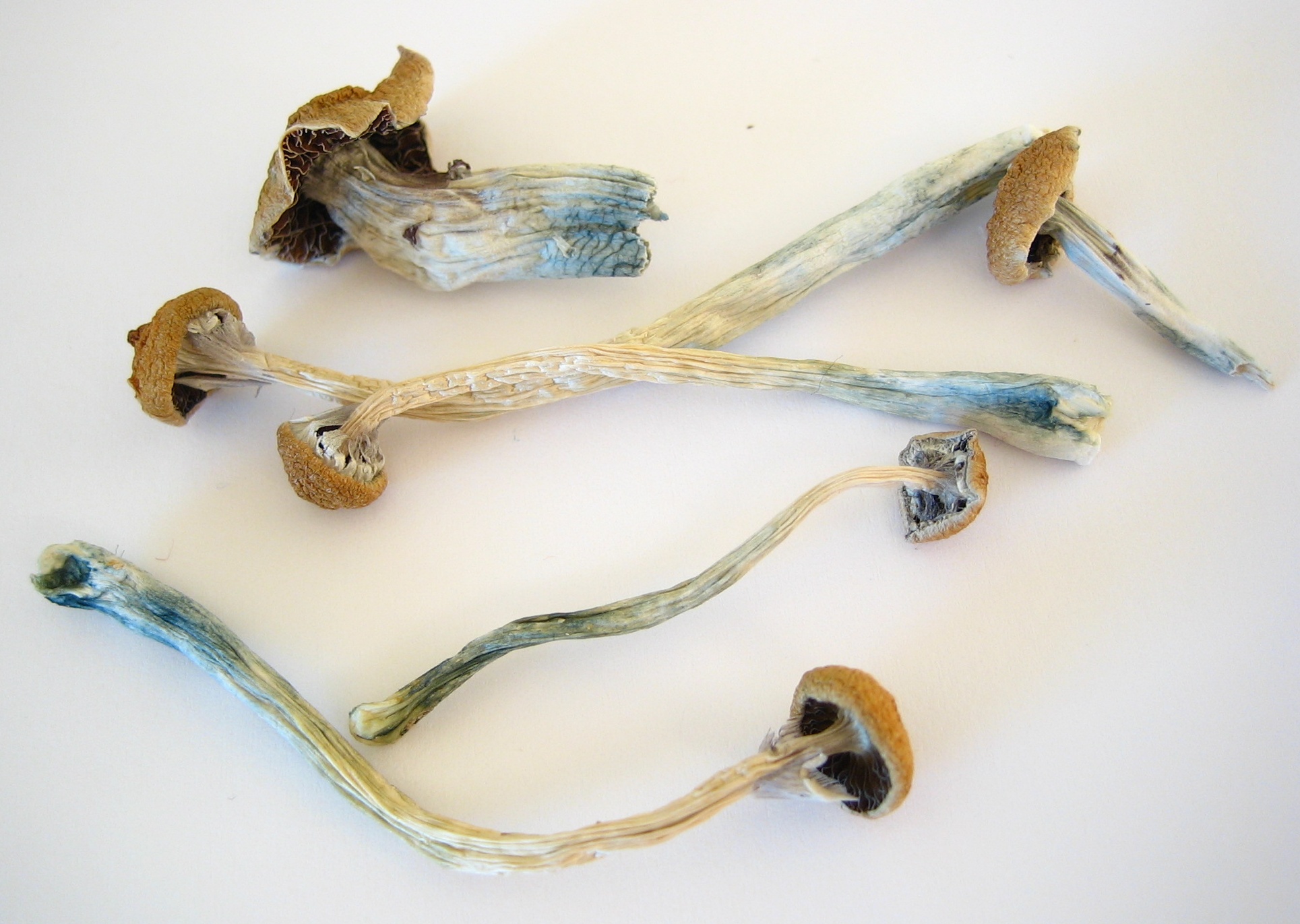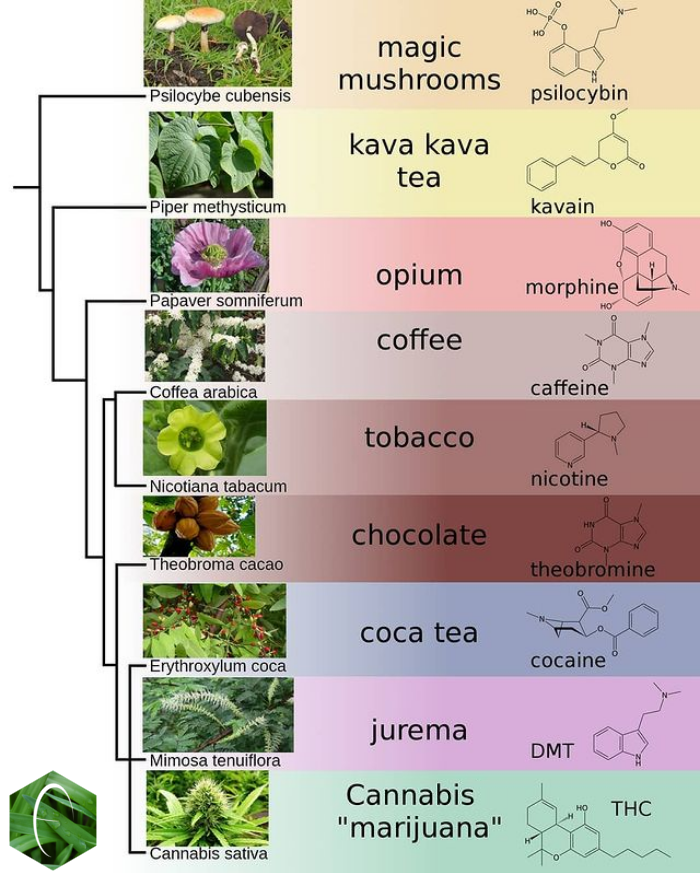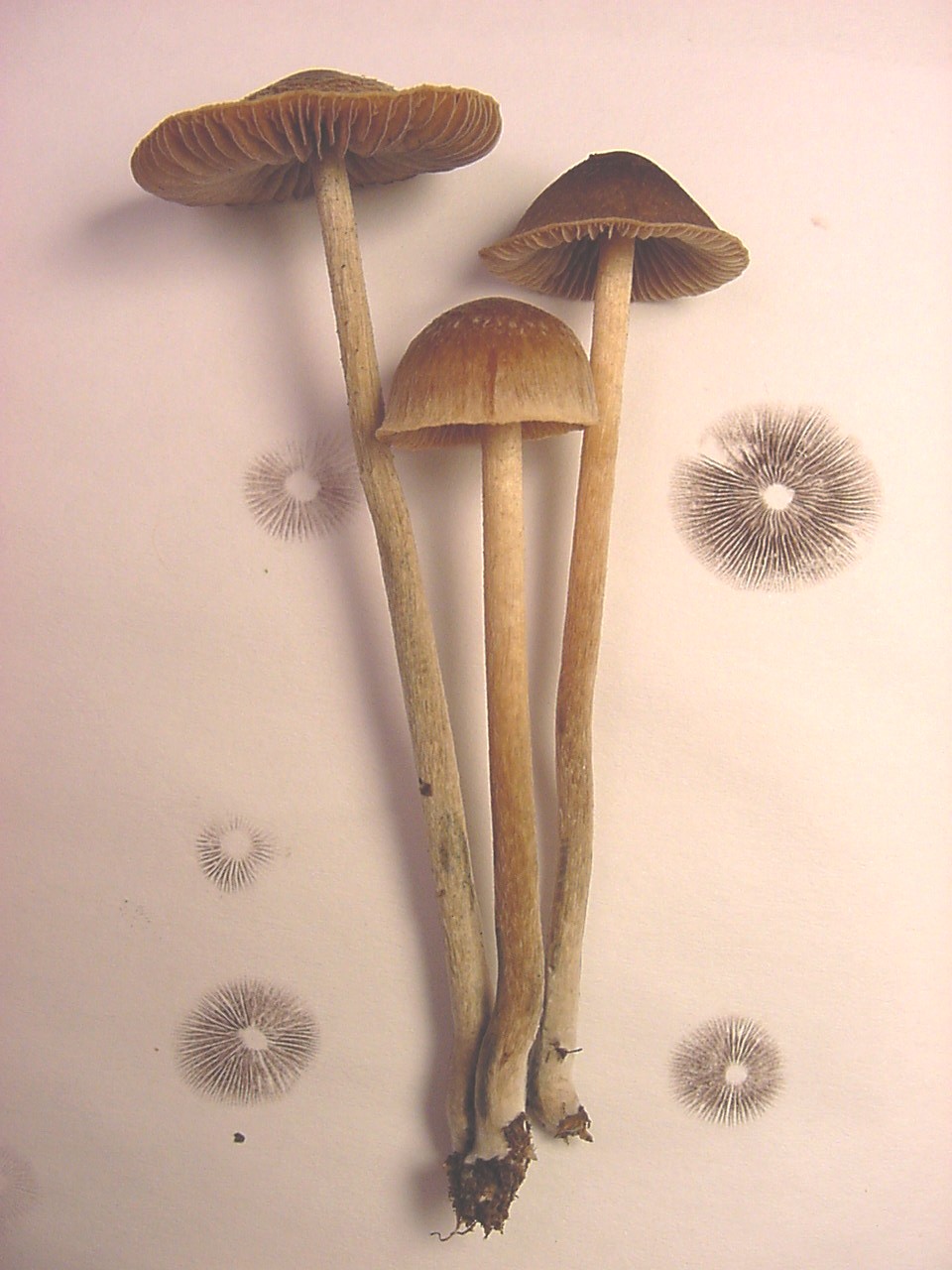|
Psilocybe Meridionalis
''Psilocybe meridionalis'' is a psychedelic mushroom which has psilocybin and psilocin as main active compounds. This mushroom is closely related to ''Psilocybe stuntzii'' but can be distinguished by its smaller spores and the presence of pleurocystidia. This is the only species of ''Psilocybe'' from section Stuntzii which has been found in Mexico. It is known only from the type location in Neverias, Sierra de Cacoma, Jalisco, Mexico. Distribution and habitat Found in Oak and Pine subtropical forests in the western mountains of Jalisco, Mexico. The holotype was collected at 2,200 meters elevation. Image:Psilocybe_meridionalis_type_location.jpg, ''Psilocybe meridionalis'' type location References *Guzmán, Gastón, Laura Guzmán-Dávalos, Florencia Ramírez-Guillén & María del Refugio Sánchez-Jácome 2008: A new bluing species of Psilocybe – the first record of section Stuntzii for Mexico. - Mycotaxon 103: 27–31. 2008. Entheogens Psychoactive fungi me ... [...More Info...] [...Related Items...] OR: [Wikipedia] [Google] [Baidu] |
Psychedelic Mushroom
Psilocybin mushrooms, commonly known as magic mushrooms, are a polyphyletic informal group of mushroom, fungi that contain psilocybin which turns into psilocin upon ingestion. Biological genera containing psilocybin mushrooms include ''Psilocybe'', ''Panaeolus'' (including ''Copelandia''), ''Inocybe'', ''Pluteus'', ''Gymnopilus'', and ''Pholiotina''. Psilocybin mushrooms have been and continue to be used in indigenous New World cultures in religious, Divination, divinatory, or Spirituality, spiritual contexts. Psilocybin mushrooms are also used as recreational drugs. They may be depicted in Stone Age rock art in Africa and Europe, but are most famously represented in the Pre-Columbian sculptures and glyphs seen throughout North, Central and South America. History Early Prehistoric rock arts near Villar del Humo in Spain, suggests that ''Psilocybe hispanica'' was used in religious rituals 6,000 years ago. The hallucinogenic species of the Psilocybe genus have a history of us ... [...More Info...] [...Related Items...] OR: [Wikipedia] [Google] [Baidu] |
Psilocybin
Psilocybin ( , ) is a naturally occurring psychedelic prodrug compound produced by more than 200 species of fungi. The most potent are members of the genus ''Psilocybe'', such as '' P. azurescens'', '' P. semilanceata'', and '' P. cyanescens'', but psilocybin has also been isolated from about a dozen other genera. Psilocybin is itself biologically inactive but is quickly converted by the body to psilocin, which has mind-altering effects similar, in some aspects, to those of LSD, mescaline, and DMT. In general, the effects include euphoria, visual and mental hallucinations, changes in perception, a distorted sense of time, and perceived spiritual experiences. It can also cause adverse reactions such as nausea and panic attacks. Imagery found on prehistoric murals and rock paintings of modern-day Spain and Algeria suggests that human usage of psilocybin mushrooms predates recorded history. In Mesoamerica, the mushrooms had long been consumed in spiritual and div ... [...More Info...] [...Related Items...] OR: [Wikipedia] [Google] [Baidu] |
Psilocin
Psilocin (also known as 4-HO-DMT, 4-hydroxy DMT, psilocine, psilocyn, or psilotsin) is a substituted tryptamine alkaloid and a serotonergic psychedelic substance. It is present in most psychedelic mushrooms together with its phosphorylated counterpart psilocybin. Psilocin is a Schedule I drug under the Convention on Psychotropic Substances. Acting on the 5-HT2A receptors, psilocin modulates the production and reuptake of serotonin. The mind-altering effects of psilocin are highly variable and subjective and resemble those of LSD and DMT. Chemistry Psilocin and its phosphorylated cousin, psilocybin, were first isolated and named in 1958 by Swiss chemist Albert Hofmann. Hofmann obtained the chemicals from laboratory-grown specimens of the entheogenic mushroom ''Psilocybe mexicana''. Hofmann also succeeded in finding synthetic routes to these chemicals. Psilocin can be obtained by dephosphorylation of natural psilocybin under strongly acidic or under alkaline conditions (hyd ... [...More Info...] [...Related Items...] OR: [Wikipedia] [Google] [Baidu] |
Psilocybe Stuntzii
''Psilocybe stuntzii'', also known as Stuntz's blue legs and blue ringers it is a psilocybin mushroom of the family Hymenogastraceae, having psilocybin and psilocin as main active compounds. It is in the section Stuntzae, other members of the section include ''Psilocybe caeruleoannulata'', '' Psilocybe meridionalis'', '' Psilocybe mescaleroensis'', '' Psilocybe ovoideocystidiata'', '' Psilocybe rostrata'', '' Psilocybe subaeruginascens'', ''Psilocybe subaeruginascens'' var. ''septentrionalis'' and '' Psilocybe uruguayensis''. Etymology and history The mushroom is named in honor of mycologist Daniel Stuntz of the University of Washington. It was originally identified growing on the University of Washington campus. Description *The pileus is .5–3.5 cm, obtusely conic to convex, expanding to convex-umbonate or flat with age. The margin is translucent-striate when moist and uplifted in age. It is hygrophanous, glabrous, dark chestnut brown while lighter towards the cen ... [...More Info...] [...Related Items...] OR: [Wikipedia] [Google] [Baidu] |
Pleurocystidia
A cystidium (plural cystidia) is a relatively large cell found on the sporocarp of a basidiomycete (for example, on the surface of a mushroom gill), often between clusters of basidia. Since cystidia have highly varied and distinct shapes that are often unique to a particular species or genus, they are a useful micromorphological characteristic in the identification of basidiomycetes. In general, the adaptive significance of cystidia is not well understood. Classification of cystidia By position Cystidia may occur on the edge of a lamella (or analogous hymenophoral structure) (cheilocystidia), on the face of a lamella (pleurocystidia), on the surface of the cap (dermatocystidia or pileocystidia), on the margin of the cap (circumcystidia) or on the stipe (caulocystidia). Especially the pleurocystidia and cheilocystidia are important for identification within many genera. Sometimes the cheilocystidia give the gill edge a distinct colour which is visible to the naked eye or wit ... [...More Info...] [...Related Items...] OR: [Wikipedia] [Google] [Baidu] |
Section Stuntzii
Section, Sectioning or Sectioned may refer to: Arts, entertainment and media * Section (music), a complete, but not independent, musical idea * Section (typography), a subdivision, especially of a chapter, in books and documents ** Section sign (§), typographical characters * Section (bookbinding), a group of sheets, folded in the middle, bound into the binding together * The Section (band), a 1970s American instrumental rock band * ''The Outpost'' (1995 film), also known as ''The Section'' * Section, an instrumental group within an orchestra * "Section", a song by 2 Chainz from the 2016 album '' ColleGrove'' * "Sectioning", a ''Peep Show'' episode * David "Section" Mason, a fictional character in '' Call of Duty: Black Ops II'' Organisations * Section (Alpine club) * Section (military unit) * Section (Scouting) Science, technology and mathematics Science * Section (archaeology), a view in part of the archaeological sequence showing it in the vertical plane * Se ... [...More Info...] [...Related Items...] OR: [Wikipedia] [Google] [Baidu] |
Jalisco, Mexico
Jalisco (, , ; Nahuatl: Xalixco), officially the Free and Sovereign State of Jalisco ( es, Estado Libre y Soberano de Jalisco ; Nahuatl: Tlahtohcayotl Xalixco), is one of the 31 states which, along with Mexico City, comprise the 32 Federal Entities of Mexico. It is located in Western Mexico and is bordered by six states, which are Nayarit, Zacatecas, Aguascalientes, Guanajuato, Michoacán, and Colima. Jalisco is divided into 125 municipalities, and its capital and largest city is Guadalajara. Jalisco is one of the most economically and culturally important states in Mexico, owing to its natural resources as well as its long history and culture. Many of the characteristic traits of Mexican culture, particularly outside Mexico City, are originally from Jalisco, such as mariachi, ranchera music, birria, tequila, jaripeo, etc., hence the state's motto: "Jalisco es México." Economically, it is ranked third in the country, with industries centered in the Guadalajara metropolitan ... [...More Info...] [...Related Items...] OR: [Wikipedia] [Google] [Baidu] |
Entheogens
Entheogens are psychoactive substances that induce alterations in perception, mood, consciousness, cognition, or behavior for the purposes of engendering spiritual development or otherwiseRätsch, Christian, ''The Encyclopedia of Psychoactive Plants: Ethnopharmacology and Its Applications'' pub. Park Street Press 2005 in sacred contexts. Anthropological study has established that entheogens are used for religious, magical, shamanic, or spiritual purposes in many parts of the world. Entheogens have traditionally been used to supplement many diverse practices geared towards achieving transcendence, including divination, meditation, yoga, sensory deprivation, healings, asceticism, prayer, trance, rituals, chanting, imitation of sounds, hymns like peyote songs, drumming, and ecstatic dance. The psychedelic experience is often compared to non-ordinary forms of consciousness such as those experienced in meditation, near-death experiences, and mystical experiences. Ego dissolu ... [...More Info...] [...Related Items...] OR: [Wikipedia] [Google] [Baidu] |
Psychoactive Fungi
This is a list of psychoactive plants, fungi, and animals. Plants Psychoactive plants include, but are not limited to, the following examples: * ''Cannabis'': cannabinoids * Tobacco: nicotine and beta-carboline alkaloids * Coca: cocaine * Opium Poppy: morphine, codeine, thebaine, papaverine, noscapine, and narceine * '' Salvia divinorum'': salvinorin A * Khat: cathine and cathinone * Kava: kavalactones * Nutmeg: myristicin * Nightshade (''Solanaceae'') plants containing hyoscyamine, atropine, and scopolamine: ** ''Datura'' ** Deadly nightshade (''Atropa belladonna'') ** Henbane (''Hyoscyamus niger'') ** Mandrake (''Mandragora officinarum'') ** Other ''Solanaceae'' * Psychoactive cacti, which contain mainly mescaline: ** Peyote ** Other ''Lophophora'' ** Peruvian Torch cactus ** San Pedro cactus ** Other ''Echinopsis'' * Minimally psychoactive plants that contain mainly caffeine and theobromine: ** Coffee ** Tea (also contains theanine) ** Guarana ** Yerba Mate ** Coc ... [...More Info...] [...Related Items...] OR: [Wikipedia] [Google] [Baidu] |
Psilocybe
''Psilocybe'' ( ) is a genus of gilled mushrooms, growing worldwide, in the family Hymenogastraceae. Most or nearly all species contain the psychedelic compounds psilocybin and psilocin. Taxonomy Taxonomic history A 2002 study of the molecular phylogeny of the agarics indicated that the genus ''Psilocybe'' as then defined was polyphyletic, falling into two distinct clades that are not directly related to each other. The blue-staining hallucinogenic species constituted one clade and the non-bluing species the other. The previous type species of the genus, ''Psilocybe '' (now Deconica montana), was in the non-bluing clade, but in 2010 the type species was changed to '' P. semilanceata'', a member of the bluing clade. A 2006 molecular phylogenetic study of the Agaricales by Matheny and colleagues, further demonstrated the separation of the bluing and non-bluing clades of ''Psilocybe'' in a larger, strongly supported phylogenetic tree of the Agaricales. ''Psilocybe'' had ... [...More Info...] [...Related Items...] OR: [Wikipedia] [Google] [Baidu] |
Psychedelic Tryptamine Carriers
Psychedelics are a subclass of hallucinogenic drugs whose primary effect is to trigger non-ordinary states of consciousness (known as psychedelic experiences or "trips").Pollan, Michael (2018). ''How to Change Your Mind: What the New Science of Psychedelics Teaches Us About Consciousness, Dying, Addiction, Depression, and Transcendence'' Sometimes, they are called classic hallucinogens, serotonergic hallucinogens, or serotonergic psychedelics, and the term ''psychedelics'' is used more broadly to include all hallucinogens; this article uses the narrower definition of ''psychedelics''. Psychedelics cause specific psychological, visual, and auditory changes, and often a substantially altered state of consciousness.Leary, Timothy; Metzner, Ralph (1964). ''The Psychedelic Experience: A Manual Based on The Tibetan Book of the Dead'' Psychedelic states are often compared to meditative, psychodynamic or transcendental types of alterations of mind. The "classical" psychedelics, the psyc ... [...More Info...] [...Related Items...] OR: [Wikipedia] [Google] [Baidu] |








